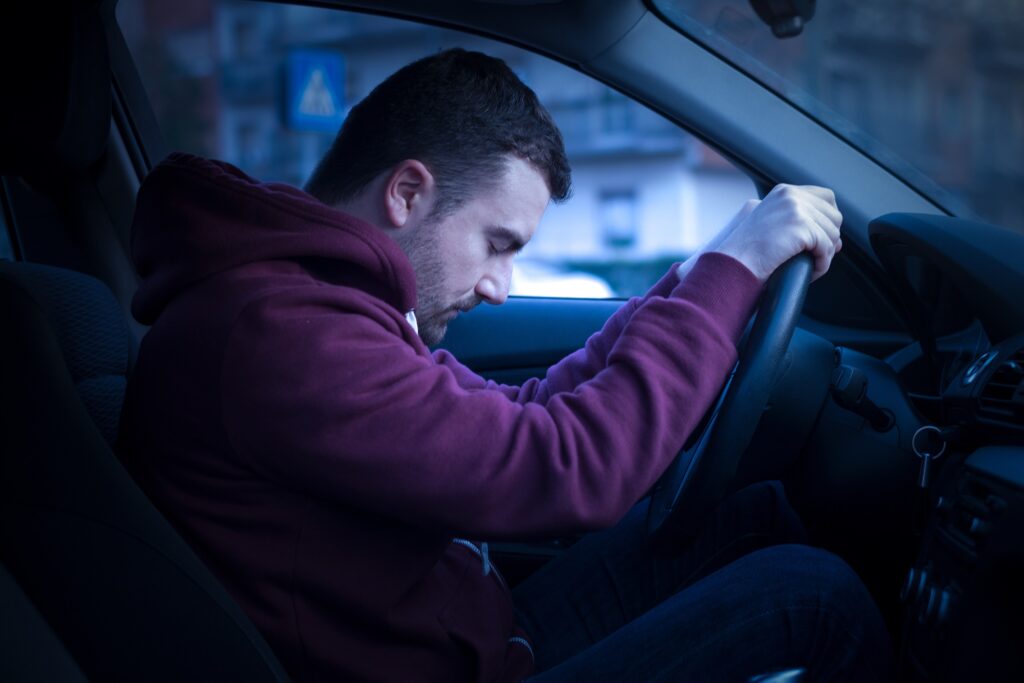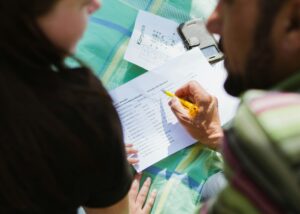
Scientists Сreated a 2-minute Method to Detect Sleepiness for Safe Working, Driving and Studying
In a major advancement for diagnosing chronic sleepiness, Australian scientists have developed a two-minute brain-based method that accurately measures sleepiness. This rapid assessment, created by researchers at the University of South Australia, has potential uses across various fields, including driving, workplace safety, and education. With this new approach, it’s now possible to determine if someone is too sleepy to safely drive, operate machinery, or even sit through a crucial exam, without requiring extensive hospital tests.

Note: This article is intended for general information and educational purposes. It summarizes scientific research in accessible language for a broad audience and is not an official scientific press release.
The Study: Background and Methodology
As ScienceDaily reports, this study was led by neuroscientist Dr. Alex Chatburn at the University of South Australia (UniSA) and published in the scientific journal Brain Research. The team focused on excessive daytime sleepiness, also known as chronic sleepiness, which affects millions globally. Normally, diagnosing this condition involves a lengthy, hospital-based test known as the Multiple Wakefulness Test (MWT), which can take hours and requires specialized equipment. This study, however, proposes that sleepiness could be diagnosed in just two minutes with a new, objective brain-based measure.
How the Study Was Conducted
In their research, the team measured participants’ brain activity using electroencephalogram (EEG) technology, which records electrical activity in the brain using electrodes placed on the scalp. EEG is a well-established method used in sleep studies, but this study’s approach is novel: it focuses on specific EEG markers that correlate with the brain’s biological sleep-wake processes, particularly a process called “neuronal excitability.” Neuronal excitability reflects how easily brain cells respond to stimuli, and it plays a central role in the brain’s readiness to stay awake or fall asleep.
By tracking these EEG markers, Dr. Chatburn’s team could quickly assess how sleepy a person’s brain was. This test is much faster than the traditional MWT, which requires a full day of observation. Similar studies in the past have used EEG to analyze brain activity, but this study’s emphasis on the biological signals underlying sleepiness is a breakthrough in its own right.
What Sets This Study Apart
This research offers a unique perspective on measuring sleepiness, moving beyond conventional EEG markers to focus on the brain’s internal sleep-wake cycle. Traditional EEG studies have relied on generalized data, which can be limited in scope. However, this study examines specific markers of neuronal excitability, directly tied to the brain’s natural sleepiness signals. Here’s what makes this study innovative:
- Use of New EEG Markers: Unlike traditional EEG studies, this research uses specific markers that reflect biological sleep-wake processes, allowing for more accurate measurements.
- Rapid Diagnosis: The two-minute method significantly reduces the time required for diagnosis, allowing for quicker, more convenient testing.
- Objective Biological Data: Rather than relying on subjective reports, this EEG-based measure provides an objective view of a person’s level of sleepiness, reducing bias.
This rapid, brain-based measurement could make sleepiness assessments practical in settings where traditional sleepiness tests are impractical, such as on-the-spot workplace screenings.
Key Findings of the Study
The study uncovered several key findings that highlight the potential of this quick sleepiness measure. Here are five major conclusions from the research:
- Diagnosing Sleepiness in Two Minutes: This brain-based method provides a reliable way to diagnose chronic sleepiness in just two minutes, in stark contrast to the hours-long MWT test.
- Predicting Sleepiness for Key Activities: Beyond diagnosing sleepiness, this method can predict a person’s readiness for tasks requiring concentration, like driving, operating machinery, or focusing in an academic setting.
- Objective and Reliable Sleepiness Assessment: The EEG-based measure uses biological markers that provide objective data, making it more reliable than self-reported assessments.
- Versatility for Different Fatigue Types: This measure could benefit not only those with diagnosed sleep disorders but also individuals experiencing fatigue from non-medical causes, such as jet lag, shift work, or irregular sleep patterns.
- New Insights into Neuronal Excitability: By focusing on neuronal excitability, this study deepens our understanding of how the brain’s natural sleep-wake processes operate, which could have implications for future treatments of sleep disorders.
Sleepiness and Cognitive Ability
Sleepiness has a profound impact on cognitive skills, affecting attention, memory, decision-making, and reaction times. When a person is excessively sleepy, their brain struggles to maintain focus, making it harder to process and retain information or respond to complex situations.
In the context of this new two-minute brain-based measure, the ability to quickly assess sleepiness could help individuals and institutions better manage tasks that require high cognitive performance. Whether it’s a student preparing for an important exam or a worker operating heavy machinery, identifying sleepiness early can help prevent errors, enhance performance, and ultimately ensure safety and productivity.
This research underscores the critical link between cognitive ability and adequate alertness, highlighting the importance of objective, reliable tools to measure readiness for mentally demanding activities.
Broader Significance for Science, Medicine, and Society
The implications of this study reach far beyond the simple diagnosis of sleepiness, affecting fields as diverse as neuroscience, medicine, workplace safety, and public health. Here’s how this research could influence various areas:
Advancements in Neuroscience. This study contributes to the field of neuroscience by providing new ways to measure and understand the biological basis of sleepiness. Sleep-wake cycles are complex processes, and this research improves our understanding of how the brain regulates sleep and wakefulness, offering new insights into sleep-related brain functions.
Medical and Clinical Implications. For the medical community, this rapid EEG measure could transform the diagnosis and management of sleep disorders, including conditions like insomnia and sleep apnea. Traditional methods are time-intensive and require a hospital setting, limiting accessibility. The two-minute EEG measure could make diagnosing these conditions faster and more affordable, improving access to treatment and potentially reducing healthcare costs.
Workplace and Educational Applications. In work environments where alertness is essential for safety, such as transportation, construction, and healthcare, this brain-based measurement could become a part of standard safety assessments. The ability to quickly evaluate sleepiness could prevent workplace accidents and improve productivity. In education, where sleepiness can impact students’ focus and performance, this tool could help ensure students are in the right mental state to learn effectively.
Benefits for Society. The potential societal benefits of this two-minute sleepiness measure are considerable. Chronic sleepiness affects productivity, mental health, and overall quality of life. This tool could increase public awareness of the importance of sleep health and encourage healthier sleep practices, contributing to a safer, more alert society.
Conclusion
The University of South Australia’s new two-minute brain-based measure for diagnosing sleepiness is a revolutionary step in understanding and managing chronic sleepiness. With its focus on objective, biological EEG markers, this method allows for a quick, accurate assessment of sleepiness that could have wide-ranging applications in medicine, education, and workplace safety. As further research builds upon these findings, it’s likely that this brain-based measure will become an essential tool in public health, helping people manage sleep-related fatigue and contributing to a safer, more alert world.
The information in this article is provided for informational purposes only and is not medical advice. For medical advice, please consult your doctor.













